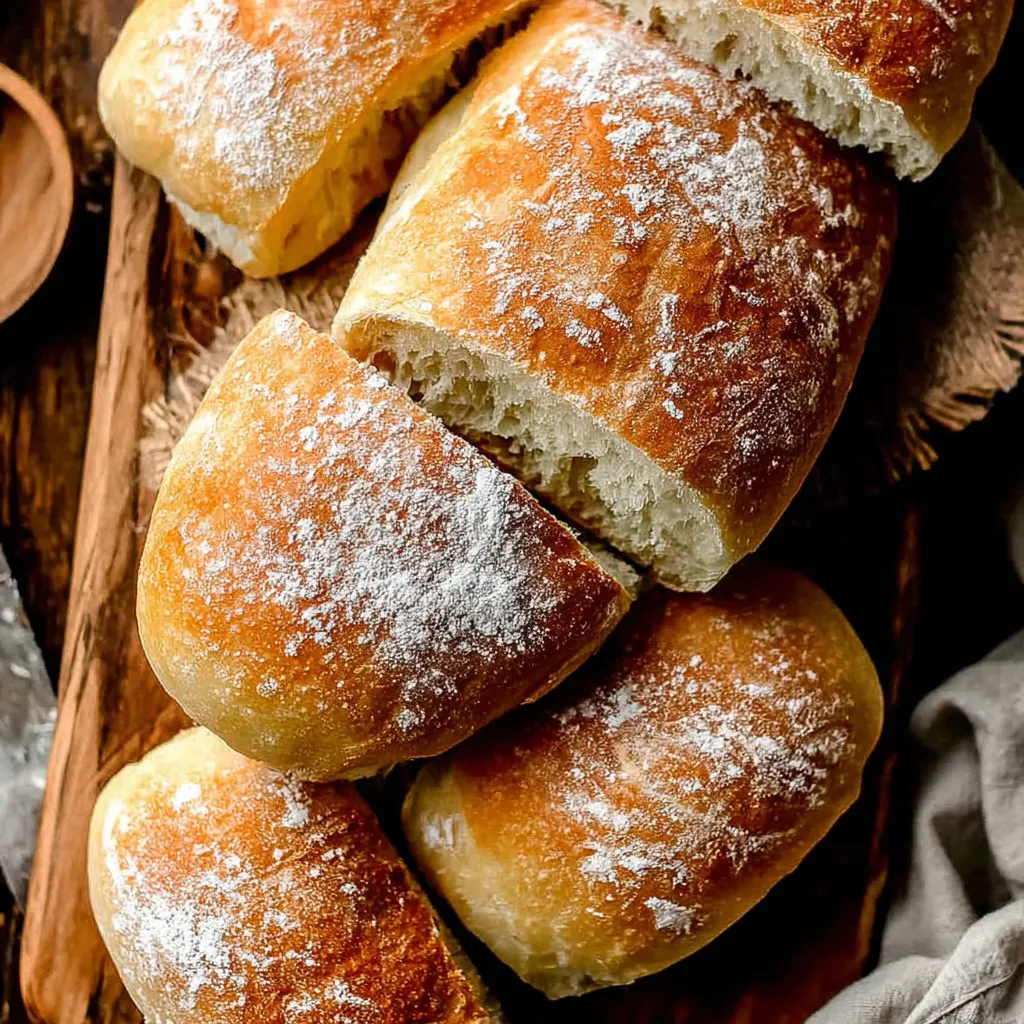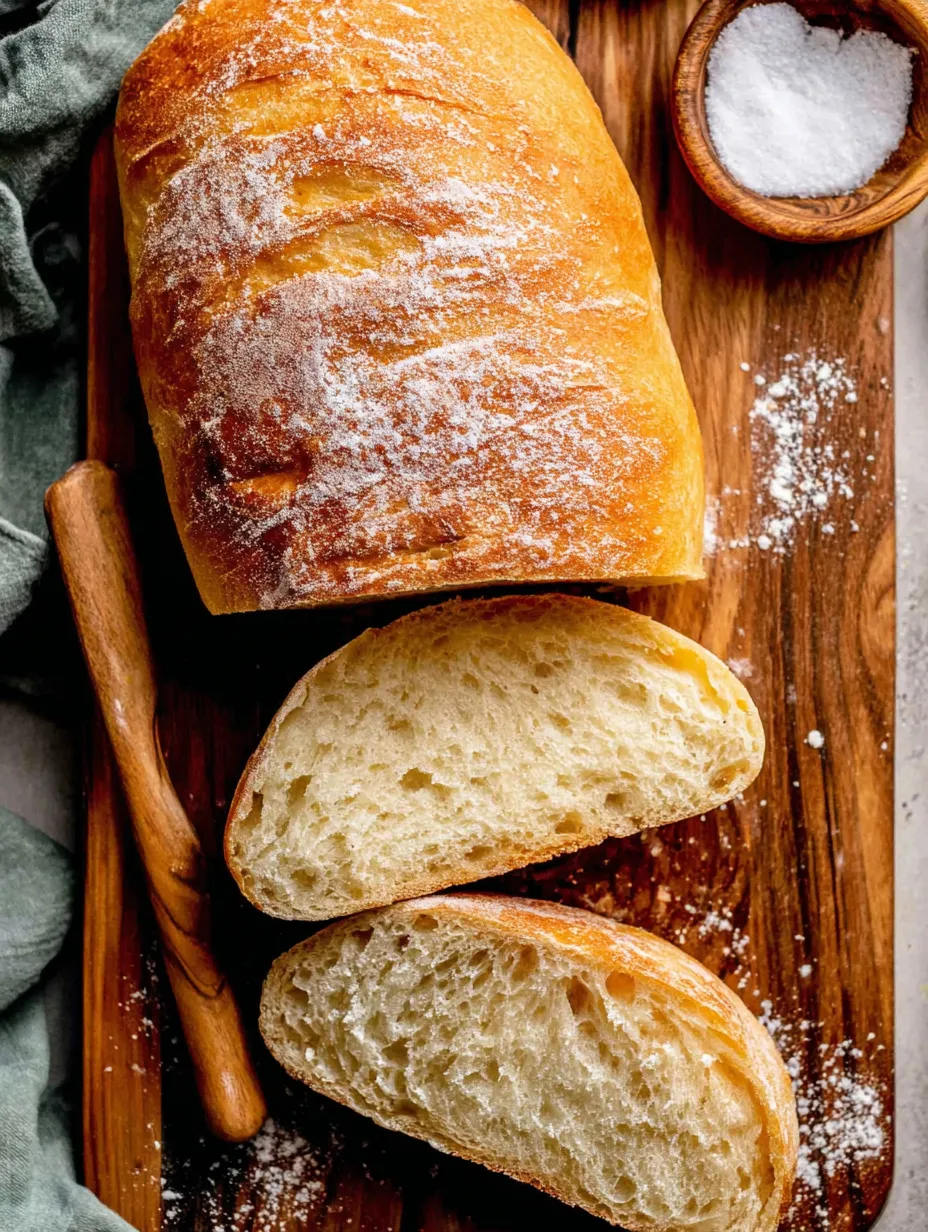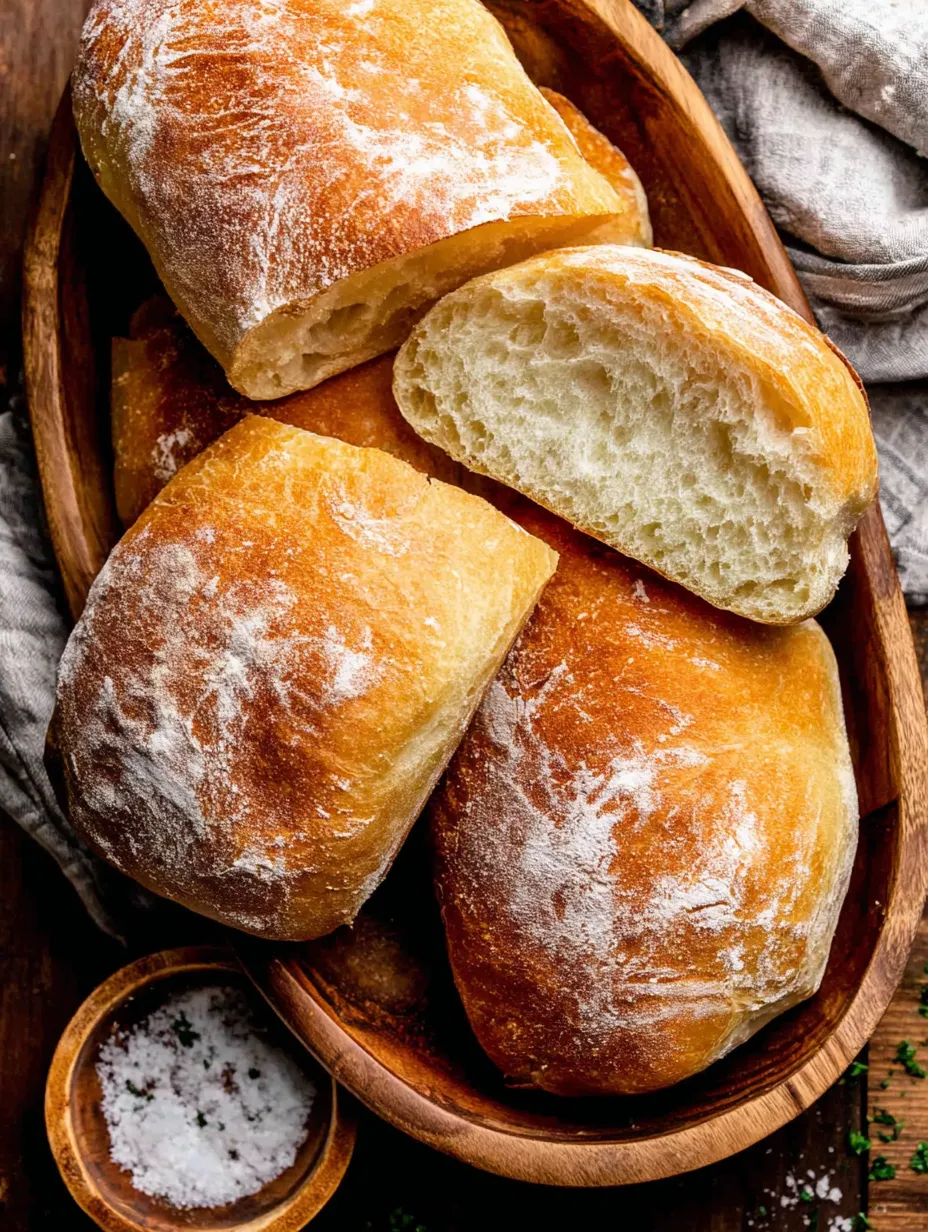 Pin it
Pin it
Ciabatta bread is that warm delicious Italian loaf with an irresistible crispy crust and an airy middle that basically begs for a dunk in good olive oil. This recipe lets you make bakery-style ciabatta in your own kitchen without special equipment or complicated steps. I truly love those first moments out of the oven when the bread is still crackling and it fills the whole house with that unmistakable toasty aroma.
The first time I baked ciabatta at home my family was shocked I had never been prouder of a loaf and now they request it for everything from soups to paninis
Ingredients
- All-purpose flour: Gives structure to the bread and ensures an airy interior For even more chewy texture look for high-protein bread flour
- Warm water: About 110 degrees helps yeast bloom and brings the dough together
- Active dry yeast: This gets the rise started Make sure it is fresh and active for best results
- Salt: Brings out the complex flavors in the bread Always use a good mineral-rich salt if you can
- Olive oil: Adds moisture and gorgeous flavor Use extra virgin for a touch of fruitiness
When picking flour inspect for freshness and buy from a store with high turnover You want your yeast to be recent so check the expiration date and store extras in the fridge
Step-by-Step Instructions
- Mix Dough:
- Combine flour and yeast in a big bowl Pour in warm water little by little and stir until a rough sticky dough forms It will look shaggy but that is perfect for ciabatta
- Knead the Dough:
- Transfer the dough to a floured countertop Knead for about ten minutes using the heel of your hand The dough should transform from sticky and lumpy to smooth and stretchy This builds those lovely airy holes inside
- First Rise:
- Place the dough in a deep oiled bowl and cover snugly with a damp towel Let it rest somewhere warm for up to two hours You want it to double in size This slow fermentation really builds a complex flavor
- Shape the Loaves:
- Gently push down the risen dough on a lightly floured surface Divide it in two and shape each piece into a loose log or rectangle Try not to deflate it any more than you must
- Second Rise:
- Place the shaped dough onto parchment on baking trays Cover with a cloth again Let them rest another hour This second proof makes the crumb extra light
- Bake:
- Preheat your oven to 450 degrees Place a pan of hot water inside for steam right at the start Drizzle olive oil across the tops and dust with a bit more salt Slide them in and bake for around twenty five minutes until deep golden and the loaves sound hollow when tapped
- Cool and Enjoy:
- Set them on a rack and listen for the crackle as the crust cools Try not to cut in right away You want to preserve that beautiful crumb structure inside
 Pin it
Pin it
My favorite part about making ciabatta is seeing those big cavernous bubbles once I slice in My kids always rush over to swipe the heel as soon as it is cool enough to handle I will never forget that first perfect crusty slice dipped in olive oil with the whole family around the table
Storage Tips
After baking let your ciabatta cool completely before wrapping If you are eating it within a day or two a simple cotton or paper bag is ideal for keeping the crust crisp For longer storage slice the loaf and freeze between sheets of parchment so you can pull out a piece or two whenever you crave homemade bread Just pop the slices into a toaster or hot oven and they come back to life beautifully
Ingredient Substitutions
If you want to play with flavors mix in chopped rosemary or sun dried tomatoes right after kneading Out of olive oil Try a splash of neutral oil though nothing beats extra virgin for that classic taste High protein bread flour will give even bigger air pockets but regular all purpose flour still delivers a wonderful loaf
 Pin it
Pin it
Serving Suggestions
Ciabatta makes irresistible sandwiches piled with roasted vegetables and cheese or sliced for bruschetta Toast it and dip in your favorite soup Serve warm slabs simply torn by hand with good olive oil and sea salt for an appetizer everyone devours
Cultural and Historical Context
Ciabatta comes from Northern Italy and means slipper bread because of its quirky shape It was actually developed in the 1980s as a bread that made perfect panini The classic open texture and chewy crust have made it a global bakery favorite ever since It is now a staple in bakeries and home kitchens around the world
Frequently Asked Questions
- → What creates the airy texture in ciabatta?
The long rising time and high hydration dough give ciabatta its signature open crumb.
- → Can I add other flavors to ciabatta dough?
Fresh herbs like rosemary or mix-ins such as sun-dried tomatoes enhance flavor and add variety.
- → How do you store ciabatta bread?
Store in a paper bag at room temperature for freshness, or slice and freeze for longer storage.
- → Is bread flour necessary for ciabatta?
Bread flour adds structure and chew, but all-purpose flour works for a softer crumb.
- → How do I know when ciabatta is fully baked?
It's done when the crust is golden and crisp, and the loaf sounds hollow when tapped on the bottom.
